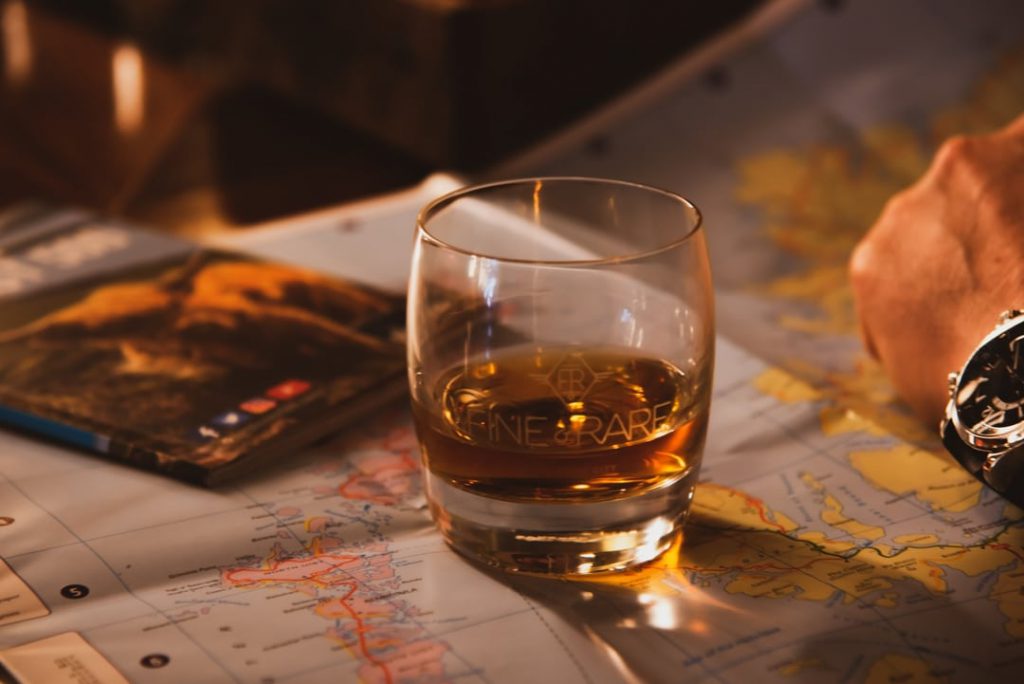There are multiple types of whiskey, ranging from all over the world. Although they share a name and a similar distilling process, the flavours and results are vastly diverse. In this blog, we delve into some of the different types of whiskey.
Irish Whiskey
Irish whiskey is a smooth, golden whiskey brewed on the Emerald Isle. Distilled up to three times using water to achieve its signature taste, Irish whiskey is often matured in repurposed casks from sherry or wine, lending the finished product a unique flavour profile.
Before being bottled and sold, Irish whiskey must be matured for at least three years. Irish whiskey is also typically blended, but single malt whiskies are becoming increasingly popular.
To be called Irish whiskey, this whiskey must be fermented by yeast and distilled at a strength of less than 94.8% alcohol by volume (ABV). This enables the distillate to absorb the flavours and aroma from the materials used, meaning that only water and caramel colouring needs to be added for the next step.
Scotch Whisky
Also known simply as Scotch, this particular whisky is made with either malt or grain – although it must contain malted barley to be classed as Scotch. Like Irish whiskey, Scotch whisky must be aged for a minimum of three years in oak barrels before being bottled, and distilleries also have to follow many laws to call their product Scotch.
The barley used to create Scotch whisky may be smoked using a peat fire, which lends a smoky flavour to the finished drink. As with Irish whiskey, Scotch may use repurposed sherry or bourbon casks to add extra flavour to the finished drink.
Scotch is made in many different regions of Scotland, each providing a distinct note to the liquor they produce. For instance, Scotch produced in Islay may have a briny taste thanks to its location, surrounded by the sea.
Bourbon
An American whisky, bourbon is primarily made from corn. Laws state that bourbon must be made from at least 51% corn, aged in a new, charred oak barrel, and be produced in America to take on the name.
Although the precise inspiration is unclear, many theories believe that bourbon’s name may be taken from the French House of Bourbon. Some historians theorise that the name instead comes from Bourbon Street in New Orleans, a large port where whiskey was sold as a cheap alternative to cognac.
Though bourbon has no clear origin, Scottish and Irish immigrants likely introduced the distillation process to America. The present form of bourbon was developed in the late 19th century, although the industry was decimated with the introduction of Prohibition in 1919.
Charred casks give bourbon a smokey flavour and a reddish tinge, making it a great favourite amongst many whiskey enthusiasts. In contrast to Irish whiskey and Scotch whisky, it has a smoother, sweeter taste.
Japanese Whisky
Boasting a smokier, drier blend, Japanese whisky is created using double malted or peated barley. The production of Japanese whisky began in Hokkaido, an area with a similar climate to the Scottish highlands, in an effort to replicate Scotch. As it takes after Scotch in style, Japanese whisky also omits the ‘e’ that Irish and American whiskies prefer.
Often sweetened with honey notes, Japanese whisky is drier and smokier than other blends. However, as Japanese whisky is a newer style, it is not bound to any traditions, meaning that whiskies can contain notes of anything from vanilla to citrus and everything in-between.
This style of whisky is becoming increasingly popular, winning many prestigious awards and ranking highly amongst established whisky producers, including Scotland and Ireland.
Rye Whiskey
Rye whiskey is another American whiskey that mimics the distilling process of bourbon. However, rather than being made from corn, rye whiskey is made from at least 51% rye and tends to be spicier and fruitier than smoother, sweeter bourbon.
When ageing rye whiskey, the liquor must be put in the barrels at no more than 62.5% ABV and must be bottled at a minimum of 40% ABV.
Historically, rye whiskey was the most popular in northeastern states, such as Pennsylvania and Maryland. Like bourbon, rye whiskey nearly vanished due to Prohibition and the banning of alcohol. However, it is now beginning to experience a modest revival.
Conclusion
Whiskey is found worldwide, with or without the ‘e’. With different flavours, traditions, and ageing times dictating its taste and colouring, it’s almost impossible to choose a favourite.
Although there are many wonderful types of whiskey globally, at London Cask Co, we are specialists in Irish whiskey investment. At present, the Irish whiskey market is booming, and there has never been a better time to invest in your barrel. If you would like to find out more about our services, contact our specialists today.


